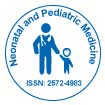Unsere Gruppe organisiert über 3000 globale Konferenzreihen Jährliche Veranstaltungen in den USA, Europa und anderen Ländern. Asien mit Unterstützung von 1000 weiteren wissenschaftlichen Gesellschaften und veröffentlicht über 700 Open Access Zeitschriften, die über 50.000 bedeutende Persönlichkeiten und renommierte Wissenschaftler als Redaktionsmitglieder enthalten.
Open-Access-Zeitschriften gewinnen mehr Leser und Zitierungen
700 Zeitschriften und 15.000.000 Leser Jede Zeitschrift erhält mehr als 25.000 Leser
Indiziert in
- Google Scholar
- RefSeek
- Hamdard-Universität
- EBSCO AZ
- ICMJE
Nützliche Links
Open-Access-Zeitschriften
Teile diese Seite
Abstrakt
Neonatal Outcome of Abdominal Wall Defects at a Tertiary Center in Oman
Abdellatif M, Ahmad A, Ur Rahman A, Al riyami N, Al dughaishi T, Niranjan joshi, Zainab AL Balushi and Abdelrahman N
Objective: The aims of this paper are, to evaluate the birth prevalence some of the epidemiological risk factors and neonatal outcomes of newborns with gastroschisis and omphalocele.
Methods: This retrospective descriptive study was conducted between January 2010 and December 2015 at the Sultan Qaboos University Hospital (SQUH) neonatal intensive care unit (NICU).
Results: Ten cases of omphalocele and two cases of gastroschisis were examined. The birth prevalence of gastrsochisis and omphalocele was 1.39 in 10000 and 0.28 in 10000 respectively. Antenatal diagnoses were available in six cases (50%). Fifty percent of the cases were inborn. Eight (66.67%) infants were delivered by caesarean section. The median gestational age and birth weight for newborns with gastroschisis at birth were 35 weeks and 2100 g, respectively; for newborns with omphalocele, these values were 37 weeks and 2583 g respectively. The median maternal age for mothers of newborns with gastroschisis was 22.5 y; for mothers of babies with omphalocele, the mean age was 28 y. The median times to full feeding for newborns with gastroschisis and omphalocele were 19 days and 6 days, respectively. The median length of stay in the neonatal unit for newborns with gastroschisis was 35 days; for newborns with omphalocele, the duration was 8.5 days. Fifty percent of all patients exhibited intrauterine growth retardation (IUGR). Primary surgical closure was performed in 10 (83.33%) patients. Associated cardiac anomalies were detected in seven babies (58.33%). Chromosomal anomalies were only documented in two patients with omphalocele. Mortality was documented in three infants (25%). Conclusion: There were more admissions for patients with omphalocoele in comparison with gastroschisis with low birth prevalence compared to reports from western countries. The majority of patients were delivered by cesarean section. Mortality occurred only among patients with omphalocele.
Zeitschriften nach Themen
- Allgemeine Wissenschaft
- Biochemie
- Chemie
- Genetik und Molekularbiologie
- Geologie und Geowissenschaften
- Immunologie und Mikrobiologie
- Klinische Wissenschaften
- Krankenpflege und Gesundheitsfürsorge
- Landwirtschaft und Aquakultur
- Lebensmittel & Ernährung
- Maschinenbau
- Materialwissenschaften
- Medizinische Wissenschaften
- Pharmazeutische Wissenschaften
- Physik
- Sozial- und Politikwissenschaften
- Umweltwissenschaften
- Veterinärwissenschaften
Klinische und medizinische Fachzeitschriften
- Anästhesiologie
- Augenheilkunde
- Betrieb
- Dermatologie
- Diabetes und Endokrinologie
- Gastroenterologie
- Genetik
- Gesundheitspflege
- Immunologie
- Infektionskrankheiten
- Kardiologie
- Klinische Forschung
- Medizin
- Mikrobiologie
- Molekularbiologie
- Neurologie
- Onkologie
- Pädiatrie
- Pathologie
- Pflege
- Toxikologie
- Zahnheilkunde

 English
English  Spanish
Spanish  Chinese
Chinese  Russian
Russian  French
French  Japanese
Japanese  Portuguese
Portuguese  Hindi
Hindi